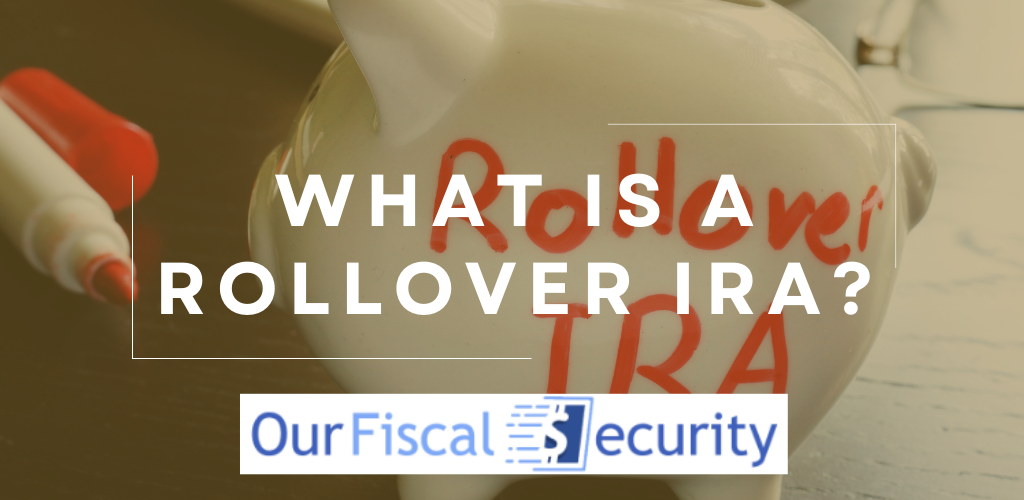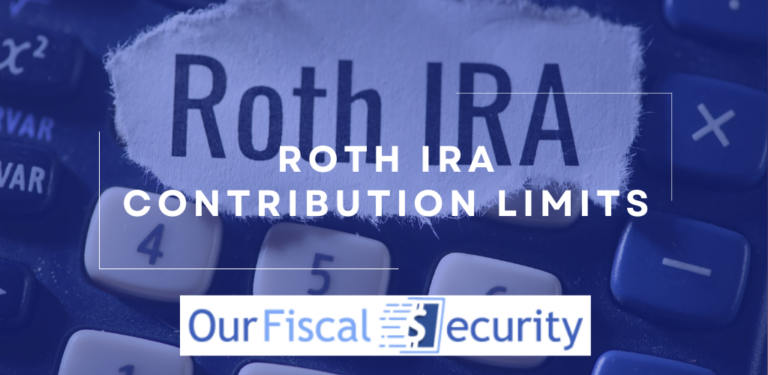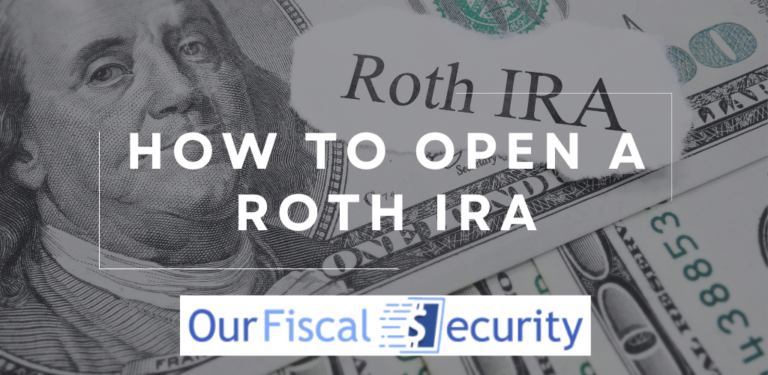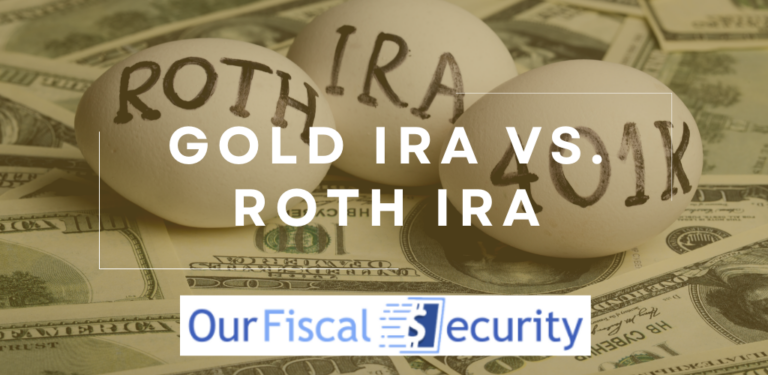What is a Rollover IRA?
Retirement plans can be daunting- especially the financial aspect. Preparing for retirement is a layered process with a lot of long-term thinking involved, and it helps to have a clear understanding of the options available to you and what they offer. One of those options is a rollover IRA.
What is a rollover IRA, how is it different from other retirement savings accounts, and how could it potentially benefit you? We answer these questions and much more in the following guide. If you are comparing retirement account options and looking for ways to consolidate or overhaul your savings strategy, you are in the right place.
Understanding Rollover IRA
First things first- what is a rollover IRA, and how does it work?
Definition of a Rollover IRA
A rollover IRA is a type of individual retirement account that allows the account holder to transfer funds from existing retirement savings accounts without paying taxes or penalties. It is generally used by people who have left a former employer and want to consolidate funds in one place- rather than leaving them in the employer-sponsored retirement plan to which they no longer contribute.
401(k) plans are the most common source of funds for an IRA rollover, but they work with almost any workplace retirement plan or pension scheme.
Key Characteristics of a Rollover IRA
- Self-directed account
- Individual retirement account (not employer-sponsored)
- Accepts rolled-over funds from qualified retirement savings accounts
- Tax-deferred status (except Roth IRA accounts)
Operation of a Rollover IRA
Rollover IRAs are operated on an individual basis- meaning you have complete control over how retirement funds are directed, and you are the only person who makes contributions. The traditional IRA account setup uses pre-tax dollars for contributions, and income tax is owed when you make a withdrawal.
Withdrawals are penalty-free once you reach age 59 and a half, and you must take the required minimum distributions once you turn 73 (the rules are different if you choose a Roth IRA set up, but more on that later).
Rollover IRA Versus Other IRA Types
If you have been researching retirement account options, you have probably come across diverse types of IRAs already. It can be confusing to understand the differences- especially when you take rollovers into account.
Below, we have highlighted the key differences between the rollover IRA account type and other popular IRAs.
Rollover IRA vs. Traditional IRA
To all extents and purposes, rollover IRAs are essentially the same as traditional IRAs. They have the same tax-deferred status, withdrawal rules, and advantages- the only difference is how they are initially funded.
A traditional IRA can be opened by anyone at any time (as long as you don’t exceed the income limit). They are then funded with normal savings from personal accounts up to the annual contribution limit of $6,500 for under 50s and $7,500 for over 50s.
Rollover IRAs are opened with a lump sum contribution taken from an existing retirement account- usually an employer-sponsored retirement plan, but also from other types of IRAs.
Traditional IRAs use pre-tax dollars. Contributions are made without paying taxes. Those funds then grow tax-deferred until retirement- at which point they are withdrawn- and ordinary income taxes are paid based on the account owner’s tax bracket.
A traditional rollover IRA follows the same rules- and the same penalties apply for early withdrawals. Early withdrawal penalties are usually 10% on top of the income tax. Both accounts have required minimum distributions from the age of 73. The amount required is based on the account’s total funds and the owner’s life expectancy. A traditional IRA compared to Roth IRA has similarities, but then there are key differences.
Relating Reading: Does Fidelity Offer a Self Directed IRA Option?
Rollover IRA vs. Roth IRA
Roth IRAs are an alternative type of individual retirement plan. Instead of contributions being tax-free, they are paid with after-tax dollars then withdrawals are tax-free in retirement. Penalties still apply for early withdrawals, but there are no required minimum distributions. The best choice between a traditional or Roth IRA depends on individual circumstances.
It is possible to open a rollover Roth IRA. If your employer-sponsored plan has a Roth setup, this is a necessary choice. Again, the only difference is the method of contributions when you first open the account.
Rollover Roth IRAs let people with a designated Roth account from a previous employer rollover savings into a self-directed individual retirement account with the same rules and benefits- without triggering a taxable event.
Comparing Rollover IRA to SEP, SIMPLE, and 401(k)
SEP and SIMPLE IRAs are employer-sponsored retirement plan IRA accounts opened by individual business owners through the financial institution of their choice. 401(k)s are an employer’s plan operated by businesses.
SEP IRAs only allow the employer to contribute and are generally only used by self-employed individuals or owners of small businesses. SIMPLE IRAs are designed to encourage businesses that cannot afford traditional 401(k) plans to provide some sort of workplace retirement plan for their employees. 401(k)s are usually provided by larger companies and employers and are paid into directly from employee salaries, with relative contributions made by the employer.
These are very different from rollover IRAs but are ideal candidates to rollover from. The main difference is the level of individual control. If you have a SEP, SIMPLE, or 401(k) plan through an employer, you have little say on how funds are used. With SEP plans, you can’t even contribute directly. Furthermore, once you leave that employer, the account sits more or less dormant.
By rolling them over to an IRA, you regain control and can continue building savings until you retire.

Advantages of a Rollover IRA
Now that we have explained a little more about what Rollover IRAs are and how they operate- let’s discuss reasons why they may be worth considering for your retirement plan. Here are the top advantages of using a rollover IRA.
Expanded Investment Choices
One of the drawbacks of 401(k)s and similar employer-sponsored pension plans is the lack of investment options. You are usually given a short list of choices that are relevant to the business- and may not be the types of things you want to invest your money in.
The investment options with rollover IRAs are infinitely more varied. Because the account is self-directed, you have access to the full spectrum of assets and asset classes- including stocks, bonds, commodities, real estate, and alternative investments.
Tax-Deferred or Tax-Free Growth
IRAs allow your savings to grow tax-deferred until you withdraw. In traditional IRAs, you don’t pay taxes on any contributions- leaving more money in your account for investment and return potential. This is especially beneficial if you expect to be in a lower tax bracket by the time you retire.
Those in the opposite situation- who think they are likely to have a higher tax bracket later- can opt for a Roth IRA rollover. That way, you don’t owe taxes on any of the money you contribute or the returns it generates.
Employer Independence: A Closer Look
By rolling over savings into an IRA, you can operate independently from your employer. Whether or not you are still employed, having control over your funds and investments is beneficial. You are responsible for managing your own retirement assets- rather than relying on an employer to do it for you.
Potential for Penalty-Free Withdrawals
As long as you wait until the age of 59 and a half, you don’t pay any penalties on withdrawals. With most IRAs, several exceptions allow you to take out money before this age without incurring early withdrawal penalties.
Some examples include buying your first home, paying for higher education, and the adoption or birth of a child. These options are simply not available with 401(k)s and most other workplace pension plans.
Procedure to Initiate an IRA Rollover
As we have established, a rollover IRA is initiated using funds moved over from an existing retirement account. The next question is- how do you do it? There are two ways to move money from a 401(k) or other qualified plan to an IRA: a direct rollover and an indirect rollover. Both have the same end result, but the process to get there is a little different.
Here is a walkthrough guide for each option.
Direct Rollovers: A Step-by-Step Guide
Direct rollovers are also known as direct transfers. As the name suggests, they move money directly from one account to another.
The process is as follows.
- Open an IRA account that supports rollovers (remember to make the correct choice between traditional and Roth depending on the setup of your current savings account).
- Contact the employer responsible for the plan you wish to roll over. Have your IRA account administrator request the direct transfer of the funds from the existing account to the new IRA.
- The transfer is arranged between the trustees or administrators without any further involvement from you. Your IRA broker will inform you when the funds are available and ready for investment.
This is the easiest and safest way to initiate a rollover to an IRA. Unless there is a specific situation that renders this option unavailable, it is generally the recommended option.
Indirect Rollovers: An In-Depth Process
Alternatively, you can choose an indirect rollover, which requires a little more effort on your part. Instead of moving the money directly, you receive the contents of the existing plan as a check or bank deposit from the employer straight into your personal account.
You then have 60 days to deposit the funds into the rollover IRA. Be warned- there are tax consequences if you miss the deadline! If you don’t complete the rollover within 60 days, the entire amount becomes taxable income and incurs the additional 10% early withdrawal penalty. It is for this reason that most people choose a direct rollover wherever possible.
Tax Implications During Rollover Process
As mentioned, the tax implications if you fail to follow the IRA rollover rules are severe. An indirect rollover carries the potential penalty of full income tax plus 10%, so it is not worth risking if you don’t have to.
If you follow the rules, there are no tax implications to worry about. Moving money from a traditional IRA or 401(k) plan into a Roth IRA will trigger a taxable event since you are transferring pre-tax dollars into an after-tax account. Again, it is best to stay with the same type of account to avoid issues.
Governing Rules for a Rollover IRA
In addition to the contribution rules, there are other factors to consider such as rules regarding IRA withdrawals, and this goes for Rollovers as well. It is essential to understand the limitations as well as the benefits to make the most informed decision.

Understanding the One-Rollover-Per-Year Rule
The once-per-year rule for IRA rollovers is quite misunderstood, and may not affect you are much as you think it might.
Put simply, the rule only applies when you are rolling over funds from one traditional IRA to another, or one Roth IRA to another. It is not relevant when moving money from company plans into a rollover IRA- and it also doesn’t apply if you are converting a traditional IRA to a Roth IRA.
In other words, unless you have multiple IRAs that you want to roll over into one consolidated account, the one-year rule is not something you really need to worry about. Another easy way to work around it is to stick to direct rollover transfers rather than indirect rollovers.
Another important note relates to the timings of distributions. You can’t take distribution directly from rolled-over funds twice within a one-year period.
Ineligible Distributions: What They Are
A distribution is any amount of money paid to you from a retirement plan. Many of these can be rolled over into an IRA, but there are exceptions.
Some distributions from company pension plans are not eligible to be rolled over into an IRA. Here are the main examples.
- Required minimum distributions
- Employer security dividends
- Excess contributions corrected as distributions
- Hardship distributions from an employer-sponsored plan
- Loans treated as distributions
- Life insurance coverage costs
Deadline to Complete a Rollover
As mentioned, there is a 60-day deadline to complete an indirect rollover. The 60 days start from the date of the distribution. It follows calendar days, not business days.
The only exceptions to the 60-day deadline are:
- When funds are frozen by regulators
- For military personnel in combat zones
- Anyone living in a federally declared disaster zone
- When there is an error that is the sole fault of the financial institution, not the account holder
Withholding and Extra Taxes: A Detailed Analysis
Tax withholding is when an employer holds back tax from your earnings and sends it directly to the IRS. If they send too much, you get a tax refund at the end of the year. Send too little, and you will face a tax bill. This impacts your IRA rollovers only when there is a discrepancy between the amount of tax paid and the taxes owed.
If you owe more tax, you can pay it before arranging the rollover. If too much tax has been withheld, it can be distributed directly to your account.
Special Considerations for a Rollover IRA
Some situations require a few special considerations when rolling over to an IRA.
Roth Conversions During Rollover: A Comprehensive Review
Roth account rollovers work a little differently. It comes down to the way things are taxed. When you deposit funds into any type of Roth savings account, you do so with after-tax dollars- making your withdrawals in retirement tax-free. There are also different rules for withdrawals- predominantly the absence of required minimum distributions.
Because of this, you can only rollover from Roth to Roth. This applies to Roth IRA, Roth 401(k)s, and any other designated Roth account. Any non-taxable amounts must be rolled over directly in a trustee-to-trustee transfer.
Additionally, you can only roll over from a Roth IRA to a rollover Roth IRA once in the space of 12 months.
Separating 401(k) or 403(b) from Other Assets: Why and How
401(k) and 403(b) accounts are both employer-based savings accounts. An employer-sponsored retirement plan is set up and managed by the company the person works for rather than the account holder themselves.
Because of this, rollovers should be handled separately. The main reason for this is because the accounts are not self-directed. With other IRA accounts, you are solely in charge of what happens- so you can arrange the transaction independently.
The best way to handle these accounts during a rollover is to contact the employer through your account administrator and request a direct transfer if possible. If the former employer does not offer this service, you can have it sent to your account and then deposit it within 60 days to avoid a taxable event.
It helps to do this separately to avoid mixing up funds and confusing deadlines.
Perspectives on Rollover IRA
Financial Advisor Perspective on Rollover IRA
From a financial advisor’s perspective, rollover IRAs are a smart choice for people nearing retirement who want to consolidate their savings. It is easier for financial advisors to manage and advise on portfolio decisions when it is all in one place.
Account Holder Perspective on Rollover IRA
As an account holder, it feels more comfortable having control over all your retirement savings and being able to follow their progress in one place. Having money stored in an employer-sponsored plan at a company you no longer work for can be complicated and difficult to manage- so it makes sense to roll it into an IRA if the option is available.

IRS Perspective on Rollover IRA
The IRS allows IRA rollovers as long as people follow the rules. If they are paid the tax they are owed when they are owed it, there are no negatives from their perspective. People are less likely to make mistakes if their retirement savings are well organized, so it can actually save the IRS hassle if people use the rollover options.
Frequently Asked Questions
What are the tax implications of withdrawing funds from a Rollover IRA?
Any withdrawal from a rollover IRA is considered taxable income (unless you have a Roth IRA plan). As such, people pay regular income tax on any funds withdrawn. Early withdrawal penalties apply to funds removed before the minimum required age of 59 years and six months. Unless you qualify for an exemption, you will pay 10% on top of the income taxes owed.
Can anyone roll over to an IRA?
Just about anyone who earns income can open an IRA and roll over funds from an existing account. Income limits apply to traditional IRAs, but you can avoid those if you roll over from a Roth account (including Roth 401(k) to a Roth IRA.
What happens if I don’t make any election regarding my retirement plan distribution?
Your plan administrator must provide a written explanation of your options for rollover and distribution. If you have not selected an option by the time your employment ends and the fund amount is over $5,000, nothing can happen until you direct the funds.
Accounts holding between $1,000 and $5,000 can be deposited by the administrator in your name if you have not made an election. If you have less than $1,000, the administrator may pay it directly to you without your consent- usually with 20% deducted for income tax. When this happens, you have 60 days to complete a rollover to an IRA to avoid taxes.
Which retirement accounts can accept rollovers?
Many qualified retirement plan accounts are accepted for rollovers- including other types of IRAs and 401(k) plans.
Is my retirement plan required to accept rollover contributions?
Retirement plans are not necessarily required to accept rollovers. The plan details laid out in the original document should stipulate if this is the case.
Conclusion
A rollover IRA is an excellent way to consolidate retirement savings- especially if you have worked for multiple employers. They make it easier to manage your funds and investment portfolio as retirement draws nearer.
Rolling over your other accounts into an IRA gives you more control and independence while substantially opening up your investment options. It is certainly worth considering for anyone looking for a more manageable and streamlined retirement plan.







